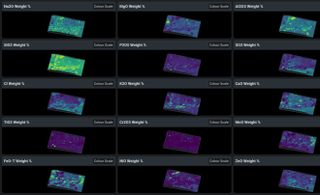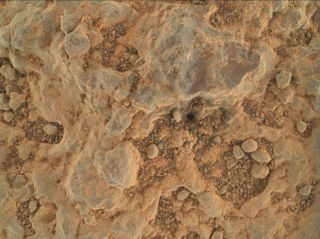NASA's Perseverance rover is ready to hunt signs of life on Mars. See the 1st science results today.
Tune in for an update from NASA today at 1 pm ET!
Even as NASA's Mars helicopter Ingenuity has captured the imagination with flight after flight on the Red Planet, the chopper's rover companion has been hard at work doing science, and NASA is ready to share the results.
The Perseverance rover is a robotic geologist and astrobiologist designed to help scientists look for traces of ancient life at the Red Planet's Jezero Crater, which likely held a large lake billions of years ago. Since landing in February, the rover has been testing technology and instruments and getting its bearings on the crater floor.
Now, NASA is ready to share the first update about Perseverance's science work in a news conference that you can watch here at 1 p.m. EDT (1700 GMT) on NASA TV and Space.com. The news conference will include a host of NASA personnel, including the associate administrator for science, Perseverance's project manager and project scientist, and members of the teams planning the rover's movements and science investigations, according to an agency statement.
In a separate statement, rover engineers said Perseverance is ready to begin hunting for signs of ancient life on Mars. The rover has tested out many of the instruments it will use to investigate rocks around Jezero crater for signs of ancient life.
Among those instruments are those on Perseverance's 7-foot (2 meters) robotic arm, which includes an X-ray geology tool that has been performing particularly well so far, according to a NASA release.

"We got our best-ever composition analysis of Martian dust before it even looked at rock," Abigail Allwood, a geologist at NASA's Jet Propulsion Laboratory (JPL) in California said of the instrument for which she serves as principal investigator, called Planetary Instrument for X-ray Lithochemistry or PIXL.
Get the Space.com Newsletter
Breaking space news, the latest updates on rocket launches, skywatching events and more!
All of the tools on the rover's arm are designed to reveal the closest look yet at the rocks and dust of Jezero crater, a crater that was once a vast lake that has long since dried out.
"If life was there in Jezero Crater, the evidence of that life could be there," Allwood added.

Another instrument, called Wide Angle Topographic Sensor for Operations and Engineering or WATSON, has also provided particularly valuable early results, according to the statement. WATSON specializes in capturing up-close photographs of rocks that help scientists understand how the samples formed based on factors like color, grain size and texture.
In addition to its own examinations, the Perseverance rover will also be responsible for gathering and storing rock samples that a future mission will carry to Earth for examination in much more sophisticated labs than can ever be sent to Mars.
Email Meghan Bartels at mbartels@space.com or follow her on Twitter @meghanbartels. Follow us on Twitter @Spacedotcom and on Facebook.
Join our Space Forums to keep talking space on the latest missions, night sky and more! And if you have a news tip, correction or comment, let us know at: community@space.com.

Meghan is a senior writer at Space.com and has more than five years' experience as a science journalist based in New York City. She joined Space.com in July 2018, with previous writing published in outlets including Newsweek and Audubon. Meghan earned an MA in science journalism from New York University and a BA in classics from Georgetown University, and in her free time she enjoys reading and visiting museums. Follow her on Twitter at @meghanbartels.
